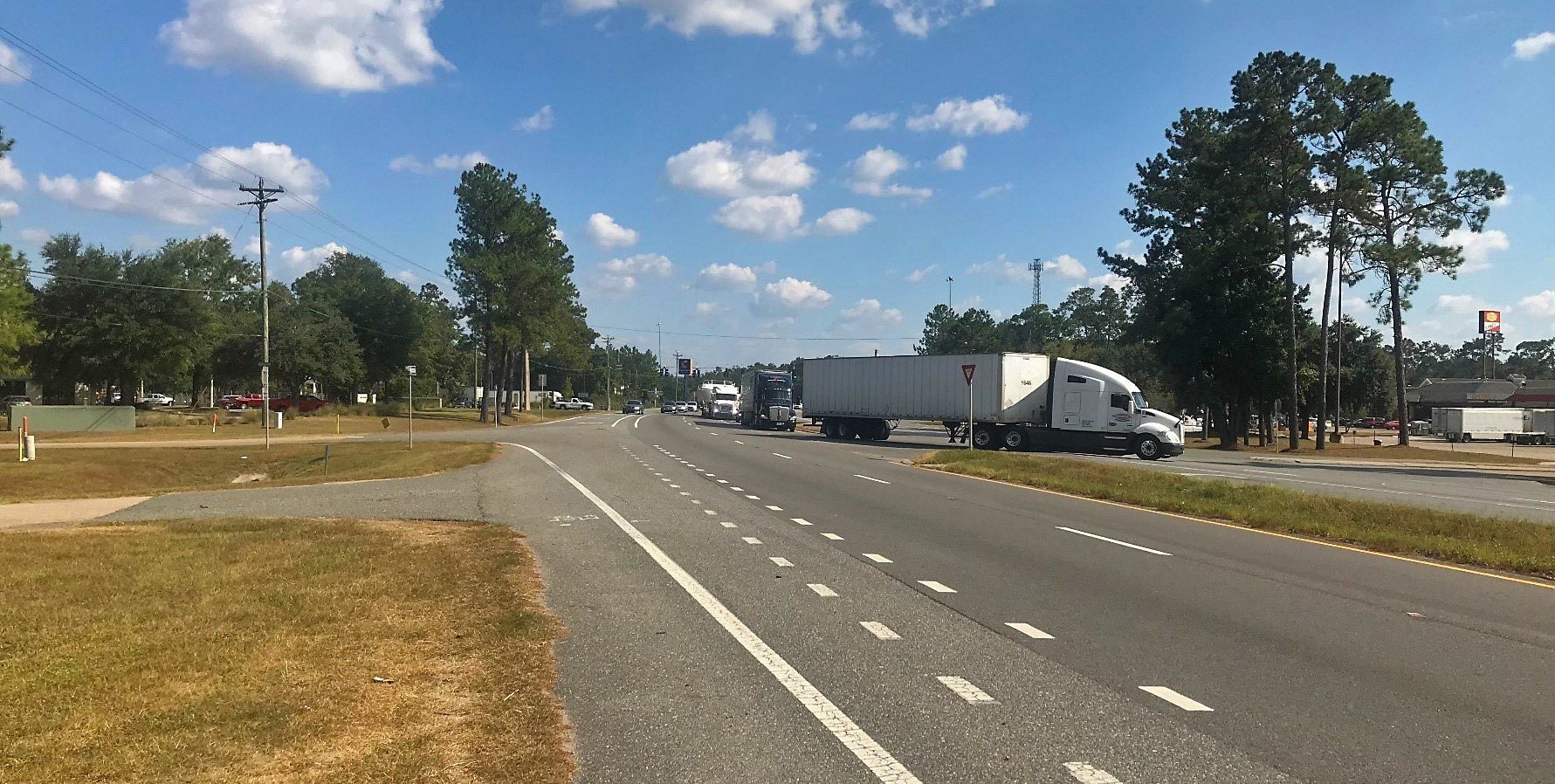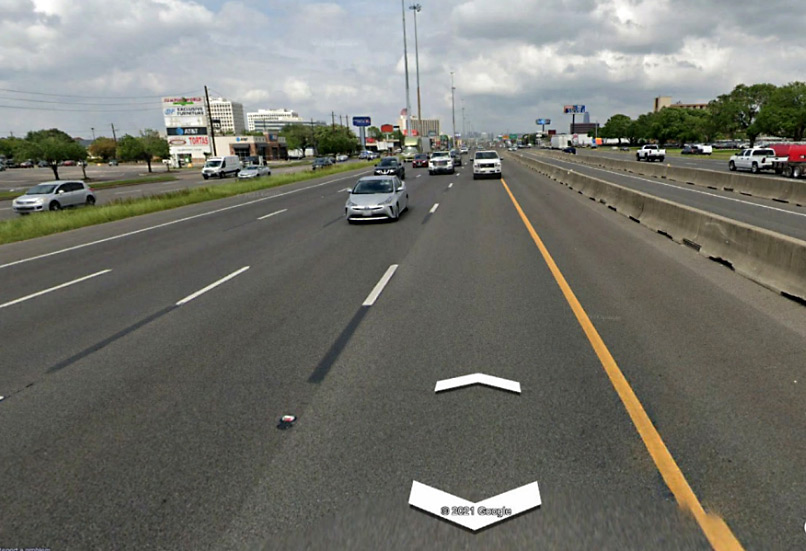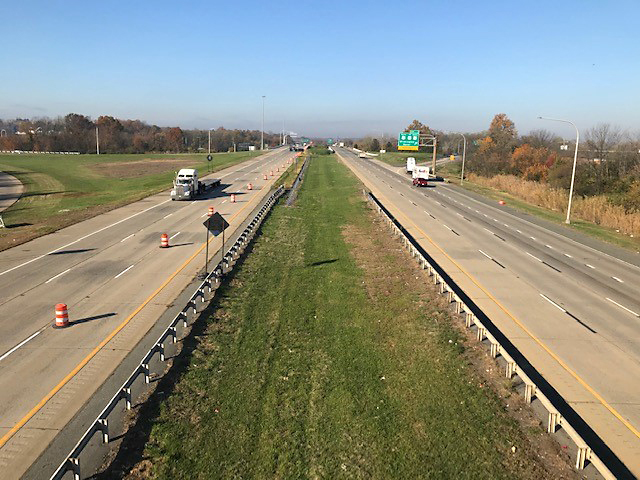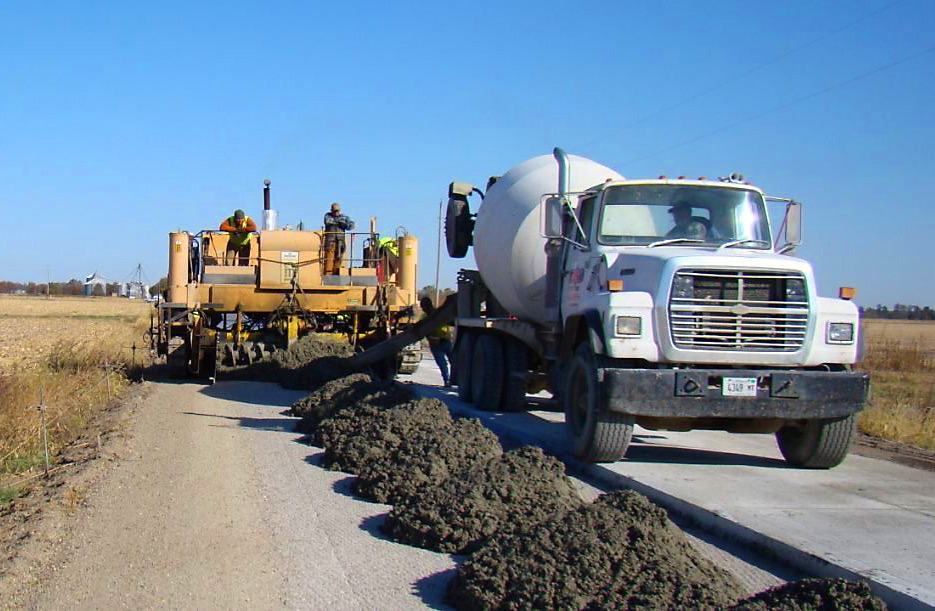
Agencies Share Positive Experiences with TOPS
Pavement overlays represent a significant portion of highway infrastructure dollars. State and local agencies can maximize this investment and help ensure safer, longer-lasting roadways by employing innovative overlay procedures that improve pavement performance, lessen traffic impacts (fewer work zones), and reduce the cost of pavement ownership.
Many transportation agencies report having positive experiences using an asphalt or concrete overlay promoted as part of the FHWA Targeted Overlay Pavement Solutions (TOPS) Every Day Counts initiative. This article highlights successful applications of four different TOPS overlays.
Highly Modified Asphalt Mixture Overlay
Highly modified asphalt (HiMA) mixtures are having a big impact in Florida. The Florida Department of Transportation (FDOT) began researching HiMA 7 years ago and found that it prevents rutting twice as well as the control mix.

The Florida DOT has monitored and evaluated the performance of HiMA overlays on this roadway since 2017.
Credit: Gary Fitts“We get excellent rutting resistance with the HiMA binder,” said FDOT State Bituminous Materials Engineer Howie Moseley. Studies also show HiMA significantly improves the performance of FDOT’s open-graded friction course mixtures, can increase structural capacity up to 20 percent, and is more cost-effective compared to the conventional mixture.
FDOT uses HiMA to address severe rutting in high-stress locations, such as truck weigh stations, agricultural inspection stations, and high-volume intersections and interchanges. Since 2017, the agency has placed more than 600,000 tons of HiMA mixtures on over 50 projects across the State.
One of the first HiMA projects built by FDOT was on Interstate 10 between two large truck stops where the combination of heavy axle loads and slow-moving traffic had resulted in severe rutting, exceeding 2 inches in some areas. FDOT had planned to reconstruct the highway section using a Portland cement concrete pavement to address these failures, but as an interim measure, FDOT milled the section to a depth of 2.5 inches and replaced it with a dense-graded HiMA mixture. “The project has performed so well that the reconstruction project was canceled,” said Moseley. After 6 years of service, rutting remains minimal.
Crack Attenuating Mixture Overlay
The Texas DOT (TxDOT) is having success with crack attenuating mixture (CAM). Research has shown that properly designed CAM interlayers may reduce the number of reflective cracks and slow the rate of reflective cracking by up to 50 percent without jeopardizing rutting resistance.

The 18-year-old CAM interlayer on I-69 in Houston, TX, is still performing well today.
Credit: Map data ©2021 GoogleThe Houston District’s first overlay project with a CAM interlayer was in 2014 on a stretch of Interstate 69. It was designed to support an annual average daily traffic of 300,000 vehicles per day. Cracks were spaced 10 to 20 feet apart on the original continuously reinforced concrete pavement. The Houston District worked with the Texas A&M Transportation Institute to design CAM as a fine-graded mixture with high-binder content applied in thin 0.5- to 1-inch lifts between the existing pavement and a thin asphalt layer.
According to TxDOT Project Manager Ashwaq Mohammed, the CAM overlay system has performed well on I-69. “The Houston District has several hundred lane miles of continuously reinforced concrete pavements at or near the end of their designed service life with varying levels of surface distress,” said Mohammed. “Many of these old pavements are heavily trafficked and unsuitable for reconstruction due to lane closures and high costs. These are good candidates for CAM interlays.”
Concrete on Asphalt Overlay
More than two decades since it was installed, a concrete overlay added to the asphalt surface of County Highway 9 in Richland County, IL, is performing exceptionally well and has no failures, according to the county engineer.
“This project provided Richland County with competitive bids, rapid construction, minimum inconvenience to residents, and a smooth-riding, long-lasting pavement,” said Richland County Engineer Danny Colwell.
In 2010, Richland County chose to place a thin concrete overlay over a 22-foot-wide asphalt road that serves as a trucking route servicing oil fields and grain elevators. At the time, pavement distress included transverse cracks due to shrinkage of the soil-cement base, with no rutting or ride issues.
Richland County decided to place the overlay for several reasons. The county had previous experience with premature oxidation of asphalt overlays, and unbonded concrete overlays had proven successful in nearby counties. Specifying a concrete overlay also enabled more competition for the work—past projects indicated that only one contractor typically bid on county asphalt projects while multiple concrete contractors were available. Crews milled the existing asphalt/seal coat pavement to a 1-inch depth and constructed a 5.5-inch concrete overlay with macrofibers.
Concrete on Concrete Overlay
Concrete on concrete-unbonded overlays allow the existing pavement to be retained as a base layer, even when the existing concrete is affected by alkali-silica reactivity (ASR)—a materials-related distress that results in premature concrete deterioration. The Delaware DOT (DelDOT) used this technique on a 9-mile section of Interstate 495 originally opened to traffic in 1978.

This concrete overlay on I-495 in Delaware was placed more than 30 years ago and still provides a smooth ride today.
Credit: Delaware Department of TransportationIn 1990, DelDOT initiated a comprehensive study to evaluate rehabilitation strategies. Major concerns included extensive deterioration due to ASR. The potential for ASR distress was not well known at the time I-495 was constructed. After a review of several strategies, DelDOT selected an unbonded jointed plain concrete overlay that allowed the use of the existing pavement structure, retained the ASR-affected concrete at the project site, and considerably reduced construction time, resulting in less disruption to traffic.
At different points on the highway, traffic volumes increased 12 to 22 percent over the 2010 projected traffic. But according to DelDOT, the project has maintained the as-constructed smooth ride and has received only minor maintenance repairs in nearly 30 years in service. DelDOT’s Director of Transportation Resiliency and Sustainability Jim Pappas said, “The key to a successful project such as this one is proper planning, coordination, and preliminary site investigation.”

This concrete overlay was placed on County Highway 9 in Richland County, IL, in 2010.
Credit: Illinois Chapter, American Concrete Pavement AssociationNew TOPS Resources
The TOPS team developed case study brochures on the use of HiMA in Florida and CAM in Texas, as well as stone matrix asphalt in Georgia and high-performance thin overlays in New Jersey. Longer, more detailed case studies and how-to documents will be released later this year.
An updated concrete overlay resource is also now available. The fourth edition of the Guide to Concrete Overlays presents the basic principles that a pavement engineer needs to design and construct concrete overlays on existing asphalt, composite, and concrete pavements.
The new edition includes current information on continuously reinforced concrete pavement overlays, geotextile separation layers, fiber reinforcement, concrete overlay design procedures, and lessons learned from the experiences of numerous State highway agency engineers.
EDC Outtakes: TOPS
Listen to your peers share insights on Every Day Counts (EDC) Targeted Overlay Pavement Solutions (TOPS). In these two editions of EDC Outtakes, Angela Folkestad, Executive Director of the Colorado and Wyoming Chapter of the American Concrete Pavement Association, talks about Colorado’s success with placing concrete overlays on existing asphalt, and Robert Blight of the New Jersey Department of Transportation exlains how his agency overcame funding challenges to create a strong pavement program that incorporates TOPS.
—MORE INFORMATION
Contact Tim Aschenbrener (asphalt) or Robert Conway (concrete) of the FHWA Office of Infrastructure Pavement Materials team.
Learn how various States are using TOPS in this Every Day Counts storyboard.
Visit the TOPS webpage for information on additional overlay technologies.
Notice: The U.S. Government does not endorse products or manufacturers. Trademarks or manufacturers’ names appear in this article only because they are considered essential to the objective of the document.
Recommended Citation: U.S. Department of Transportation, Federal Highway Administration - Washington, DC (2022) Innovator Newsletter, May/June 2022, Volume 15 (90). https://doi.org/10.21949/1521808



